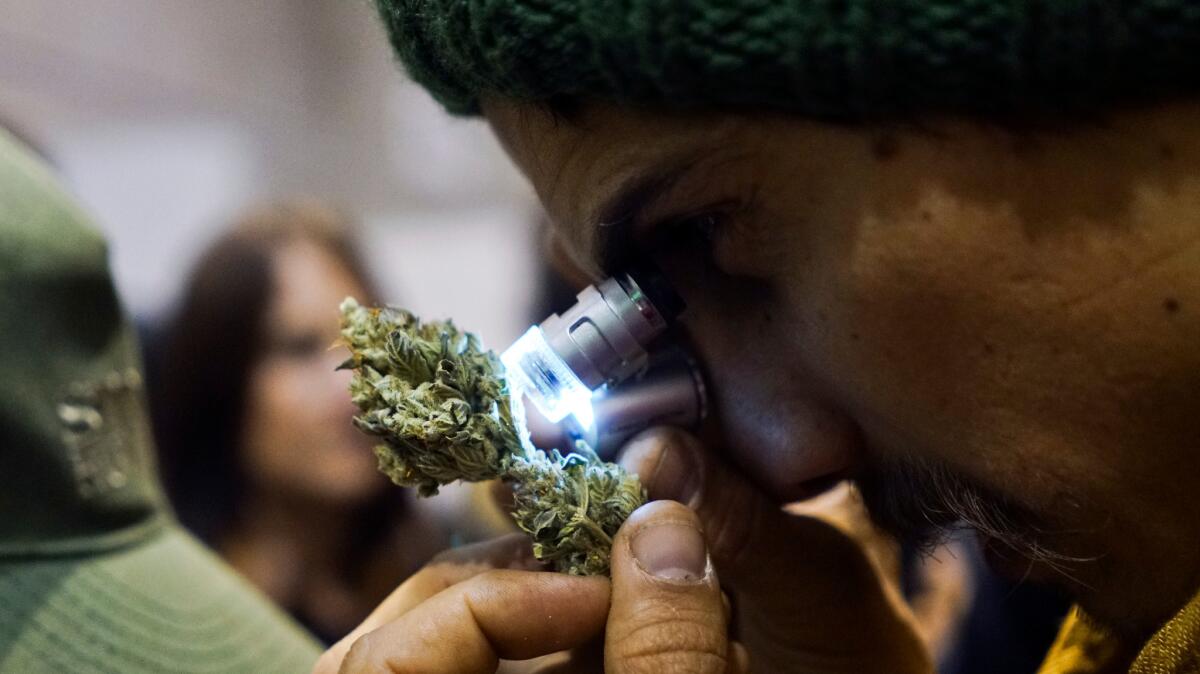Editorial: Hope for looser DEA treatment of pot goes up in smoke

The federal government has for years employed a bizarre circular logic when it comes to marijuana. Officially deemed to have a high potential for abuse and no currently accepted medical application, marijuana is listed by the Drug Enforcement Administration as a Schedule 1 drug under the Controlled Substances Act — on a par with heroin and LSD. Yet that very listing has severely limited the research that could settle the question of whether marijuana does indeed have therapeutic value, as attested to by countless sufferers of glaucoma, cancer patients left nauseated from chemotherapy and a raft of other ailing people and their physicians who report anecdotally that marijuana eases suffering.
On Thursday, the DEA again rejected requests that it relist marijuana as a Schedule II drug (or lower), a major disappointment for those seeking looser controls. As long as marijuana remains a Schedule 1 drug, researchers face stiff bureaucratic controls that limit legal access, even for study purposes. But the DEA also announced Thursday that it would expand the number of facilities authorized to grow cannabis for distribution to government-approved researchers, potentially setting the stage for definitive assessments of marijuana’s dangers and benefits.
Though the latter move is heartening, it is too little and too long in coming. Last year, just eight researchers received samples from the country’s sole government-approved cannabis farm at the University of Mississippi. Increasing the supply and variety of research-ready marijuana could allow for more studies and broaden their scope. But the government should also commit to easing the approval process for scientists seeking to do more of the research it says it needs to properly evaluate marijuana.
As it is, the federal government lags far behind the American people and many state governments when it comes to evolving attitudes about marijuana regulation. A Gallup poll last year found 58% of respondents support some level of legalization, a number that has been growing steadily for nearly half a century. Support was higher among younger survey-takers than among seniors, suggesting that the political winds behind legalization will increase. Meanwhile, half of the states now allow medical marijuana despite the federal ban, and after November, as many as 10 states could allow some level of recreational use. That sets up a legal conflict between state and federal laws, which means that people growing and selling with the blessing of their state could face federal prosecution under a less marijuana-friendly administration than that of President Obama, whose Justice Department has mostly declined to go after states with looser laws.
This is a different kind of reefer madness. The DEA could have reclassified marijuana so that it could be treated like a prescription drug, freeing doctors to order it — subject to FDA oversight — for patients for whom they believe it provides benefits. Instead, the DEA opted to keep its policies mired in the 1970s, which will only exacerbate the growing divide between the states and feds.
Follow the Opinion section on Twitter @latimesopinion and Facebook
More to Read
A cure for the common opinion
Get thought-provoking perspectives with our weekly newsletter.
You may occasionally receive promotional content from the Los Angeles Times.










